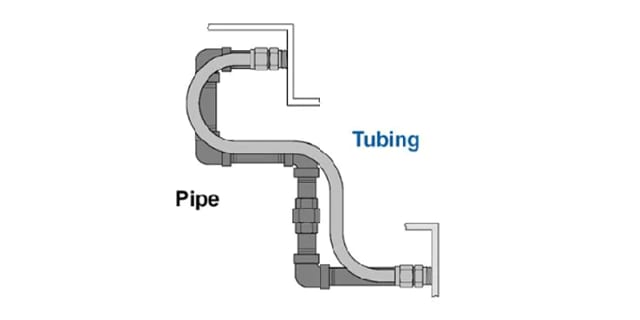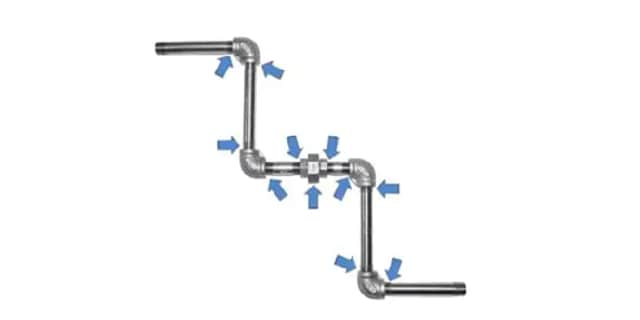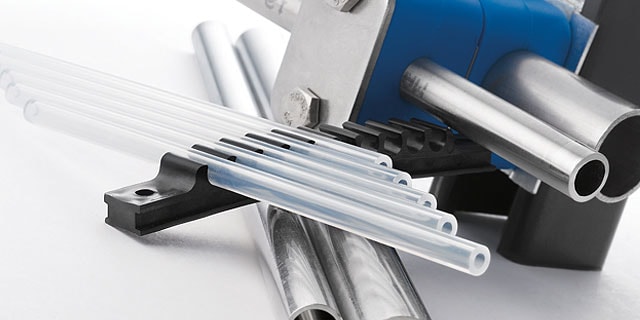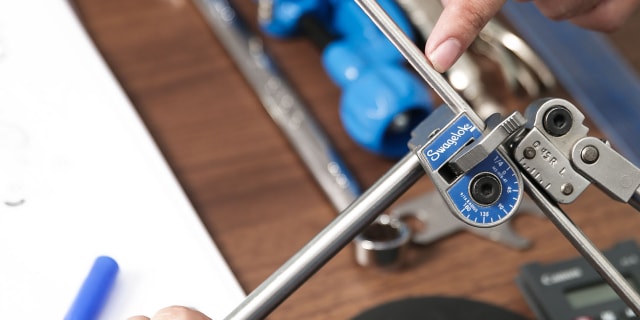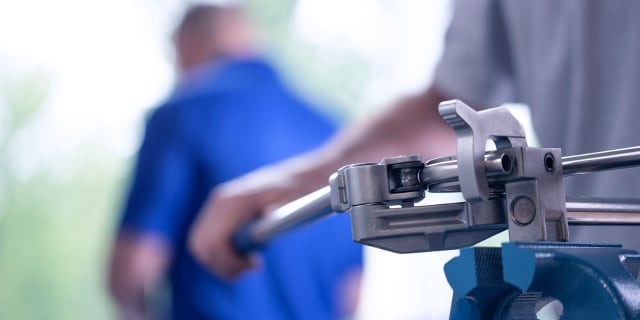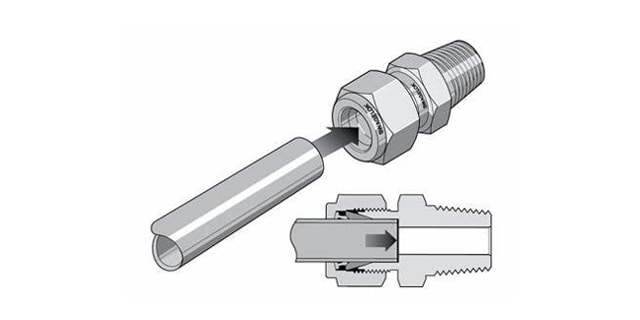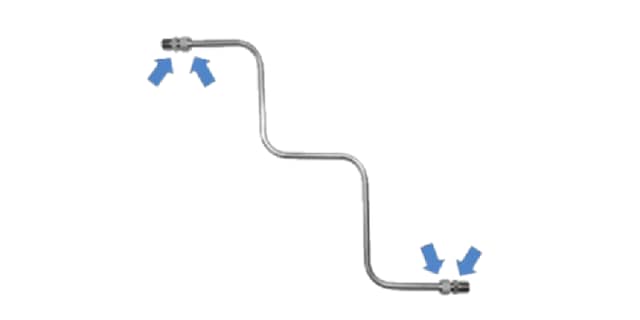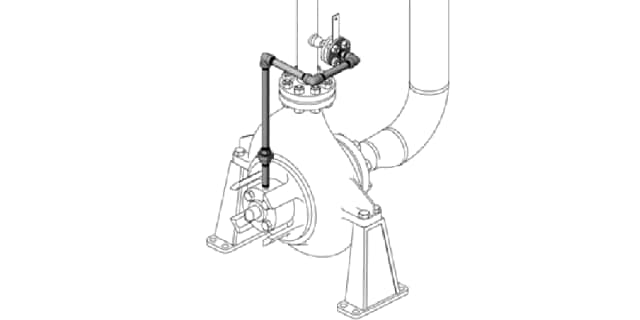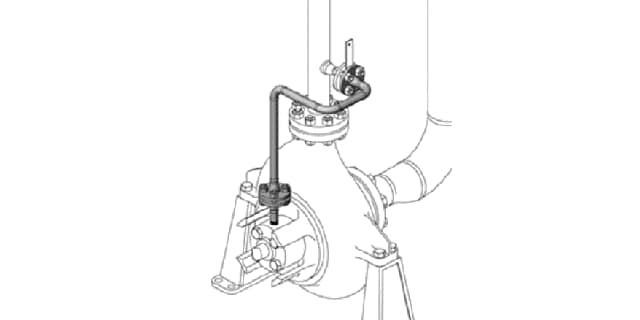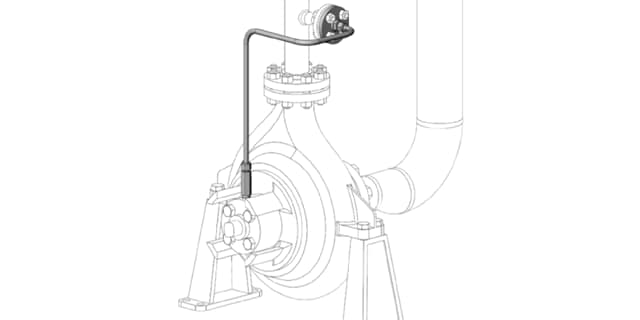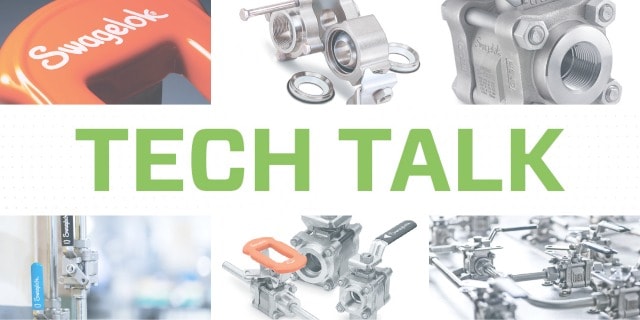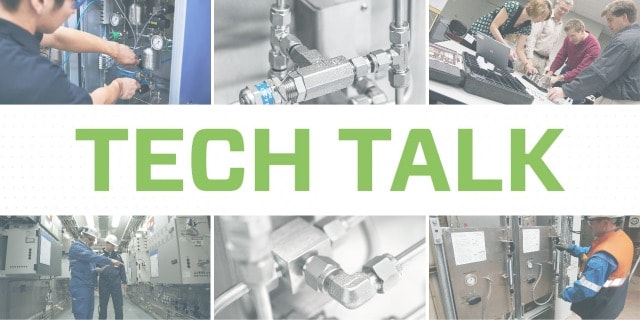Tech Talk: Tubing Vs. Pipe
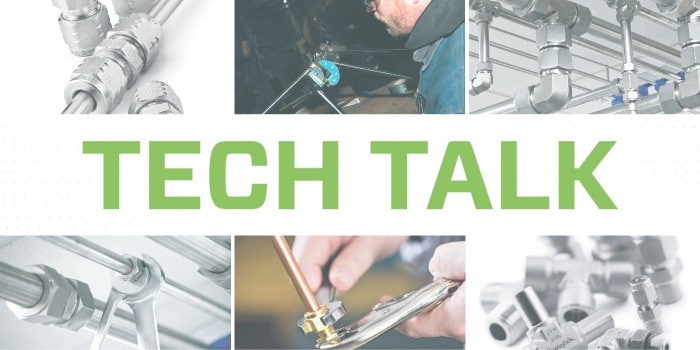
Tubing Vs. Pipe
Are you experiencing issues with your piping system? Is it leaks? Maybe it's maintenance? Installation difficulty? Finding the right, reliable tubing options with the material properties needed for your application is critical to building a leak-tight fluid system. Ensuring fluid system health can often begin with the age-old question Tubing or Pipe? Let's dive into the characteristics of each:
Pipe:
- Pipe is only hot rolled.
- Pipe is rigid.
- It cannot be shaped without special equipment.
- Threads must be cut for end connection.
Tubing
- Tubing can be bent or coiled without excessive distortion.
- Tubes are cold rolled or hot rolled.
- Tubing is stronger than pipe, great for durability and strength.
- Ends require no additional prep past deburring and facing.
Tubing Vs. Pipe Webinar Recap:
Small-Bore Tube and Pipe Overview
Tubing is typically specified by the Outside Diameter (OD) and wall thickness. Tubing is usually used for structural purposes, and sizing is based on the exact outside diameter of the tubing. For example, you might see a measurement written as 1/4" OD x 0.035" Wall.
On the other hand, piping is specified by Nominal Pipe Size (NPS) and a schedule. A Nominal Pipe Size from 1/8" - 12" is based on the nominal outside diameter, different from the measured outside diameter that we see with tubing. A common misconception is that the nominal pipe size refers to the ID on smaller pipes.
As with most problems, there may be multiple ways to solve them. For example, tubing and pipe both work when moving a fluid from point A to point B. However, piping can take a little more work to make that happen.
Pipe:
- Must be cut, deburred, and threaded.
- Sealant must be used on the threaded connections (Examples include PTFE tape or Swagelok Swak liquid sealant).
- The pipe fittings are then tightened "wrench tight."
Tubing:
- A single length of tubing is cut and deburred.
- The tube is bent.
- Two tube fittings are used to connect the process.
SPEAK TO A FLUID SYSTEM EXPERT
The Hidden Costs of Pipe
Complex fluid systems problems are often costly. However, they can often be traced back to a single source: a leaky process pipe. As notorious as they may be, these process lines are not only usually fixable, but they can be optimized to improve safety, operational efficiency, profitability, and product quality. Here are a few key things to think about and watch out for when considering the use of pipe in your fluid system:
- The design of threaded connections is susceptible to leaks, even with proper sealant.
- "Wrench Tight" is subjective, depending on the strength of the installer. This can lead to leaks if it's not tightened appropriately or damaged threads if over tightened.
- Elbows may end up being over or under tightened to align correctly. This can cause damage to threads and leakage.
- Each connection introduces a leak potential. The system shown below has 11 total leak points.
- Once installed, removal of any component requires sequential disassembly and introduces potential leaks again.
- If back-welding, you can expect increased costs from additional required permits, weld tents, fire watch, etc.
Advantages of Tubing
While threaded pipe has historically been a reliable choice in fluid system applications, tubing is a beneficial alternative for various reasons.
- First and foremost: the labor savings. Using tubing in your fluid system can lead to significant cost savings compared to pipe.
- Tube fittings are designed to help deal with vibration in your system maintaining mechanical integrity.
- One length of tubing is required from point A and point B.
- One of those reasons is tubing's easy bendability and routing capabilities, which can help operators achieve more intricate and efficient fluid system design with fewer connection points.
- Bends create less turbulence and pressure drop than pipe elbows.
- Fittings are pulled-up manually or hydraulically.
- Gage-able fittings after initial pullup. Easy to see whether or not your system is installed correctly.
Looking at the graphic below. You can see several improvements compared to the earlier pipe graphic.
- Notice the number of potential leak points has been reduced to four. There is no sequential disassembly required for maintenance.
- No sequential disassembly is required for maintenance. It's as simple as undoing the nuts and removing the tubing.
- Weight savings on tubing, no extra material required to cut threads.
- Less stress and strain on supports.
Tubing Vs. Pipe Case Studies
Let's look at a few quick examples of when you might have to choose between pipe and tube.
Plan 11 Process Flush in Threaded Pipe
The example above is a mechanical seal on a cylindrical pump coupled to a motor (not shown here). A seal is needed between the process pump and the motor and a lot of pumps use a mechanical seal. The mechanical seal needs some fluid to operate correctly. In some cases, it's an external fluid. In other instances, it's the fluid being pumped through the system.
We'll take a line from the discharge of the pump and send it to a gland on the mechanical seal. When designing this system, we have a few things to consider:
- Because of the routing, we need to get from the nozzle/flange down to the pipe thread connection/gland.
- With elbows being used, there are eight potential leak points.
- Difficult to install. Alignment issues can lead to over or under-tightening.
- Difficult to maintain. If leakage occurs in the system, it can be tricky to resolve.
- The weight of the pipe and equipment is working against us due to vibration.
The installation of a pipe system can be appealing due to the initial low upfront cost. However, to ensure leak prevention, costly back-welding may be necessary.
Plan 11 Process Flush in Welded Pipe
The example shown here is an alternative system that uses welded pipe from the beginning.
- In this case, the system requires a minimum of eight welds to get the pump's discharge from the nozzle down to the gland.
- There are significant permit requirements, a fire watch, and maybe a welding tent if you're in a processing facility such as an oil refinery.
- The system is difficult to maintain. Clogs or added instruments require a new spool piece.
- The weight of the pipe may require additional support, welds, and fabrication.
- Additional cost considerations from permits, consumables, equipment, inspection, and rework.
The "inexpensive" pipe material quickly becomes only a small portion of the project cost compared to the labor required to install, optimize, and maintain the system. It's essential to consider the additional costs of labor when choosing between designing a tubing system or a pipe system.
Plan 11 Process Flush in Tubing
The tubing system above shows the nozzle a flange connection coming off the discharge, an orifice, and a compression fitting. The tubing is then routed down to an extended male connector, allowing the fluid to get through the pump housing and into the gland. Some of the key considerations with this system are:
- Only four potential leak points.
- Easier and faster to install. Cold work only and one installer.
- Easy to maintain.
- Vibration is minimized by routing tubing close to the pump.
In Review, one of the biggest things between tube and pipe is the number of connections. There are far fewer connections in a fluid system with tubing. Fewer connections mean fewer potential leak points. Not only does a tubing system have fewer connections, but it's also easier to assemble and disassemble. Are you looking to spend less money on your next project? Implementing a tubing system will help reduce overall installation labor and time, allowing you to free up resources for the larger project and priorities that matter most.
Need help figuring out what system works best for you? Contact us and speak to a fluid system expert today.

